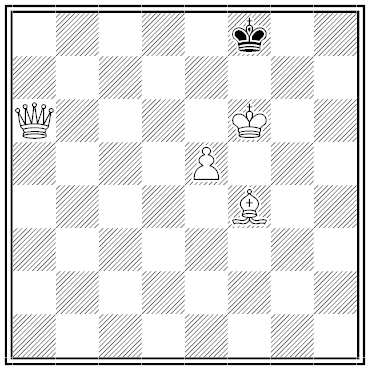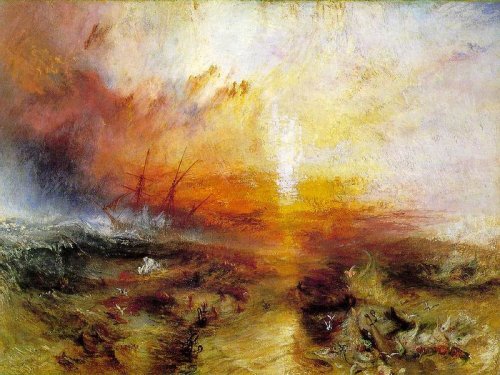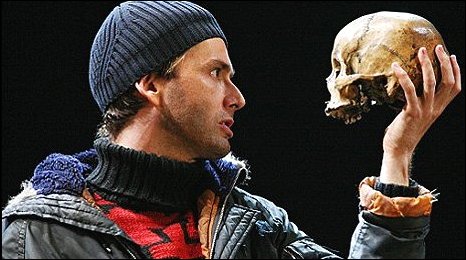
By Joseph Kling, from Chess Euclid, 1849. White to mate with the pawn in three moves.

By Joseph Kling, from Chess Euclid, 1849. White to mate with the pawn in three moves.

noyade
n. a mass execution by drowning
conclamant
adj. crying out together
commorient
adj. dying together or at the same time
J.M.W. Turner’s 1840 painting The Slave Ship recalls a brutal convention in the Atlantic slave trade — an insurance company would reimburse a captain for a slave who was lost at sea, but not for one who died of illness aboard ship. In 1781 Luke Collingwood, captain of the Zong, threw 133 sick and malnourished Africans overboard so that he could claim their value from his insurers. Turner displayed the painting next to lines from his own poem:
Aloft all hands, strike the top-masts and belay;
Yon angry setting sun and fierce-edged clouds
Declare the Typhon’s coming.
Before it sweeps your decks, throw overboard
The dead and dying — ne’er heed their chains
Hope, Hope, fallacious Hope!
Where is thy market now?
Britain had already outlawed its own slave trade when the painting appeared, but its impact encouraged the empire to oppose the institution everywhere.

When Polish composer André Tchaikowsky died in 1982, he left his skull to the Royal Shakespeare Company in hopes that he might appear as Yorick in a production of Hamlet.
No one felt comfortable fulfilling this wish until David Tennant used the skull in a performance in Stratford-upon-Avon in 2008. He continued to use it throughout the production’s West End run and in a later television adaptation.
“André’s skull was a profound memento mori, which perhaps no prop skull could quite provide,” said director Gregory Doran. “I hope other productions may, with the greatest respect for André, use the skull as he intended it to be used, for precisely this purpose.”
(Thanks, Pål.)
An old Danish jester named Yorick
Drank a gallon of pure paregoric;
“My jokes have been dull,”
He said, “but my skull
Will one of these days be historic.”
— Ogden Nash